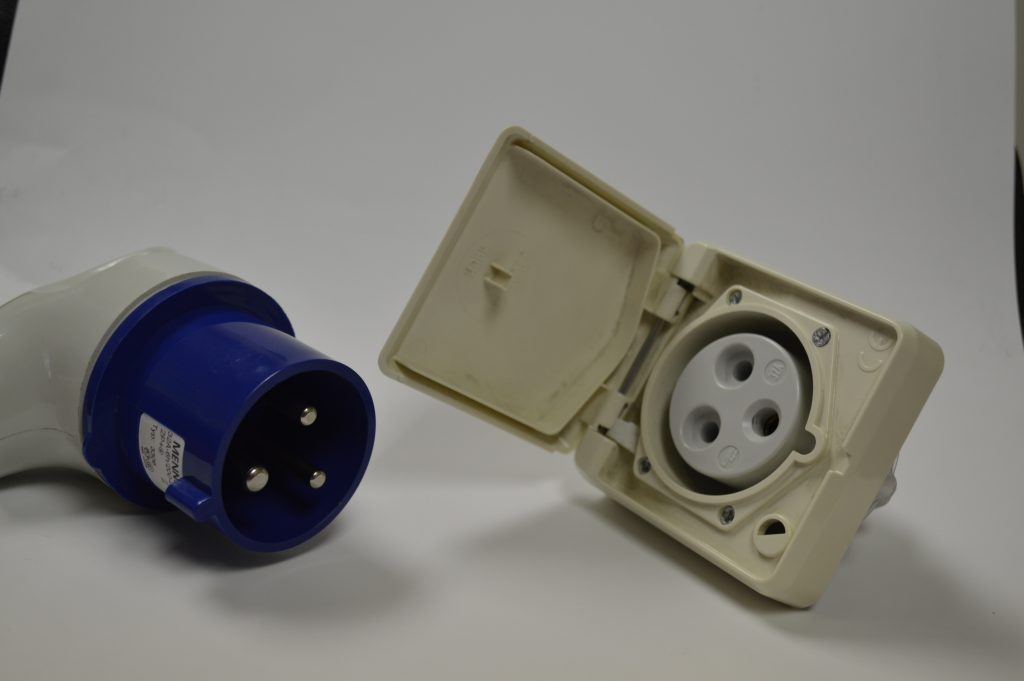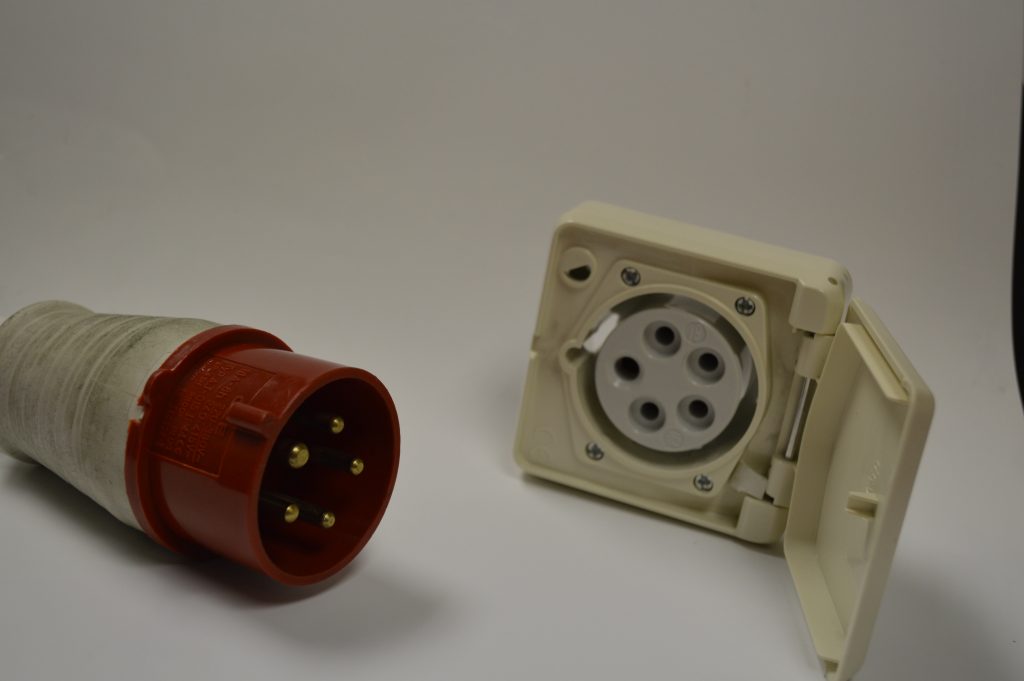CONNECTING FREE-STANDING COOKING APPLIANCES – APPLYING THE REGULATIONS
By Chris J Koen and Anthony Schewitz
There are many misconceptions around stove couplers, and while we seldom see couplers, we do need to know about them, which regulations apply, and how to apply them correctly.
SANS 10142-1, Edition 2, requires that free-standing cooking appliances be connected via a stove coupler and that a switch-disconnector must be installed.

6.16.3.1 Switch-disconnector
6.16.3.1.1 The circuit that supplies a cooking appliance through fixed wiring, a stove coupler (see figure 1), or an industrial type socket-outlet (figure 2), and shall have a readily accessible switch-disconnector, which may supply more than one appliance.

6.16.3.1.2 A switch-disconnector for a cooking appliance(s) shall
a) be in the same room as the appliance(s),
b) be at a height above floor level of not less than 0, 5 m and not more than 2, 2 m,
c) preferably not be above the cooking appliance(s),
d) be within 3 m of the appliance(s), but within 0, 5 m of the appliance(s) if the switch-disconnector’s purpose is not clearly indicated, and
e) not be fixed to the appliance.

The code also covers the so called ‘cooker unit/combo cooker unit’ (see Regulation 6.16.3.2).
6.16.3.2 Cooking appliance circuits
6.16.3.2.1 A dedicated circuit(s) shall be provided for cooking appliance(s)
that are rated at more than 16 A.
6.16.3.2.2 One circuit shall not supply more than one permanently connected
cooking appliance, unless the appliances are in the same room.
6.16.3.2.3 A cooking appliance circuit may also supply one socket-outlet if
the rating of the socket-outlet does not exceed 16 A and if the following are
all contained in one control unit (see also 6.15.4.1, which deals with mixed loading circuit).
a) the socket-outlet;
b) an earth leakage protection device including overcurrent protection for
protecting the socket-outlet; and
c) the switch-disconnector required for the cooking appliance (see
6.16.1).
NOTE The socket-outlet has to be protected against earth leakage so, unless the
protection device (see (b) above) is in the control unit, the entire cooking appliance
circuit has to be protected against earth leakage.
6.16.3.2.4 If a cooking appliance is connected by means of a stove coupler
(6.16.3.3.1 (a)) or an industrial type socket-outlet (6.16.3.3.1(b)), the open
end of the connector tube or socket-outlet shall point downwards.
The wiring code also requires that free standing stoves must be plugged in by means of a stove coupler or an industrial socket-outlet (welding plug and socket). The regulations also recommend that these types of socket-outlets (industrial type) should not be used. (See regulation 6.16.3.3)
Discussions with many contractors revealed an ongoing reluctance to use stove couplers or industrial socket arrangement for the following reasons:
Stove couplers
- The high cost of stove couplers.
- The stove couplers are not freely available and there is a long waiting period for them.
- The construction of the couplers is bulky, and the stove cannot be pushed back against the wall.
Industrial sockets
- Stoves tend to generate a leakage to earth, particularly in older appliances and in humid areas causing nuisance tripping, hence there is a reluctance to protect them with earth leakage devices.
- A 45 or 32 Amp single phase industrial type socket-outlets are not readily obtainable; only the 16A socket-outlet is freely available.
6.16.3.3 Stove connection
6.16.3.3 A stove designed to be a free-standing appliance rated above 16 A shall be connected through,
a) a stove coupler which shall comply with SANS 60309-1 and of dimensions as given in SANS 337 (a maximum of 45 A single-phase (figure 4) and 16 A per phase for three phase) (See fig 3), or
b) a socket-outlet that complies with SANS 60309-1 (industrial type) with 30 mA earth leakage protection, however, the use of industrial type socket-outlets is not recommended for stove connections. (See fig 5)
NOTE 1 Earth leakage protection is not required for the stove circuit when a stove coupler is used.
NOTE 2 For a three-phase coupler, the earth connection needs special consideration.

The tried and tested method of connecting stoves via an isolator and cable or other flexible arrangement remains the most practical and popular, though currently illegal (since Amd 1 of 2003) but deserves reconsideration.
Context
To put this into context, it is important to know that, prior to Amendment 1, this is how the regulations read:
SABS 0142-1, Edition 1
6.16.3.3 Stove connection

6.16.3.3.1 A free-standing stove raged above 16 A shall be connected through:
a) a stove coupler which shall comply with SABS IEC 60309-1 and of dimensions as given in annex A, a minimum of 45 A single-phase and 16 A per phase for three-phase, or
NOTE 1: Earth leakage protection is not required for the stove circuit when a stove coupler is used.
NOTE 2: For a three-phase coupler, the earth connection need special consideration.
b) hard wiring to the stove supply terminals, or
c) a socket-outlet that complies with SABS IEC 60309-1 (industrial type) with 30 mA earth leakage protection, however the use of industrial type socket outlets is not recommended for stove connections.
6.16.3.3.2 If a cooking appliance is connected by means of a stove coupler (6.16.3.3.1 (a) or industrial type socket-outlet (6.16.3.3.1 (c)), the open end of the connector tube or socket-outlet shall point downwards.
Risk
Due to this regulation (6.16.3.3) connection to free-standing stoves could place the contractors’ credibility at risk. This regulation needs reconsideration from the SABS 10142-1 working group due t the fact that these parts are difficult to source, making them impractical in today’s installations. The installation of these devices created complications in installations that should not exist. In short, this concern should be raised and taken forward.
More info: +27 (0)11 271 0686
Email: koenc@ecasa.co.za










